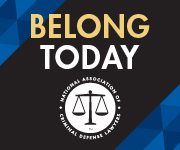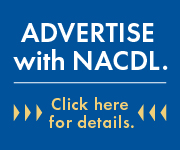Washington, DC (July 21, 2011) – Nearly a half million people, or approximately three percent of Florida’s adults, pass through the state’s misdemeanor courts each year. Most are found guilty. The average court appearance lasts as little as three minutes.
Charges are viewed as minor, BUT the consequences of conviction are significant. Not only are there direct, immediate costs of such a conviction (fines and/or imprisonment), but often there are also long-term, collateral consequences (employment barriers, loss or suspension of licenses, restrictions on parental rights, possible deportation or refusal of reentry for legal aliens, to name a few).
The National Association of Criminal Defense Lawyers (NACDL) studied misdemeanor courts and procedures in 21 Florida countiesi and is releasing its results and recommendations to the public today at noon. The report is entitled Three Minute Justice: Haste and Waste in Florida’s Misdemeanor Courts.
To read the report, please click here.
----------------------------------------
iBrevard, Broward, Charlotte, Citrus, DeSoto, Gadsden, Hardee, Hernando, Hillsborough, Indian River, Leon, Manatee, Miami-Dade, Orange, Osceola, Pasco, Pinellas, Polk, Sarasota, Sumter, and Volusia.
Media Coverage
- "Can't Serve Justice in 3 Minutes, Alternative Programs Can Help," by Gerald Kogan. Orlando Sentinel, October 23, 2011.
- "Misdemeanor Court: Wasteful or Necessary?" by Jacqueline Fell. Bay News 9, August 1, 2011.
- Video on Three Minute Justice, Bay News 9.
- "Gideon Alert: NACDL Report Exposes Florida''s ''No Counsels'' Courts", by David Carroll. National Legal Aid & Defender Association, August 3, 2011.
Contacts
NACDL Communications Department
The National Association of Criminal Defense Lawyers is the preeminent organization advancing the mission of the criminal defense bar to ensure justice and due process for persons accused of crime or wrongdoing. A professional bar association founded in 1958, NACDL's many thousands of direct members in 28 countries – and 90 state, provincial and local affiliate organizations totaling up to 40,000 attorneys – include private criminal defense lawyers, public defenders, military defense counsel, law professors and judges committed to preserving fairness and promoting a rational and humane criminal legal system.













